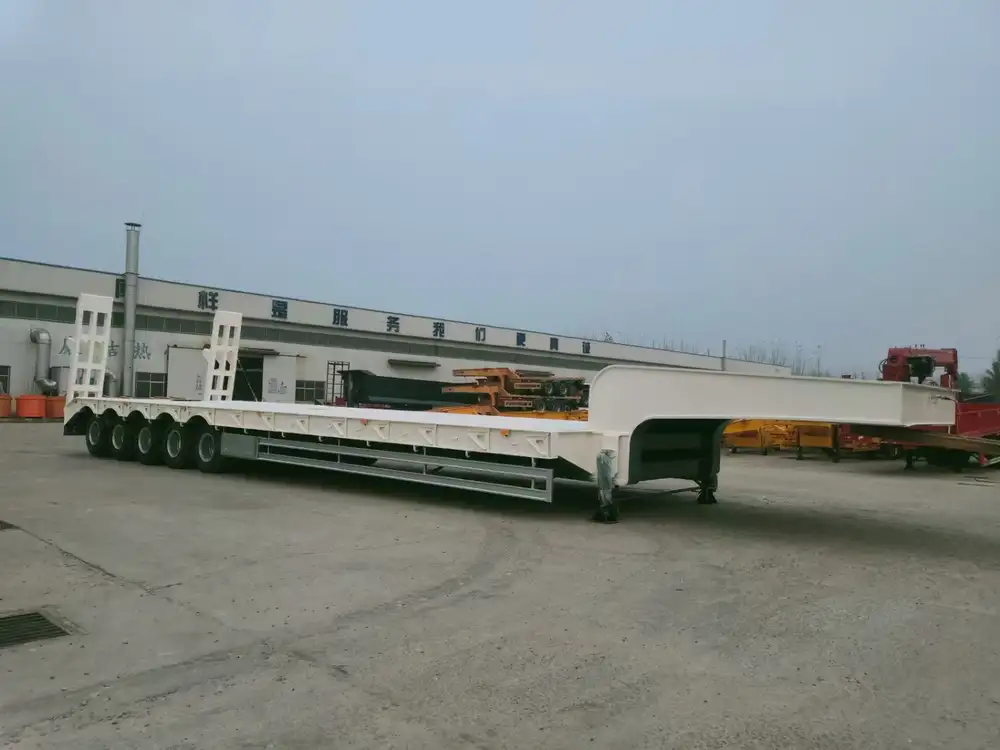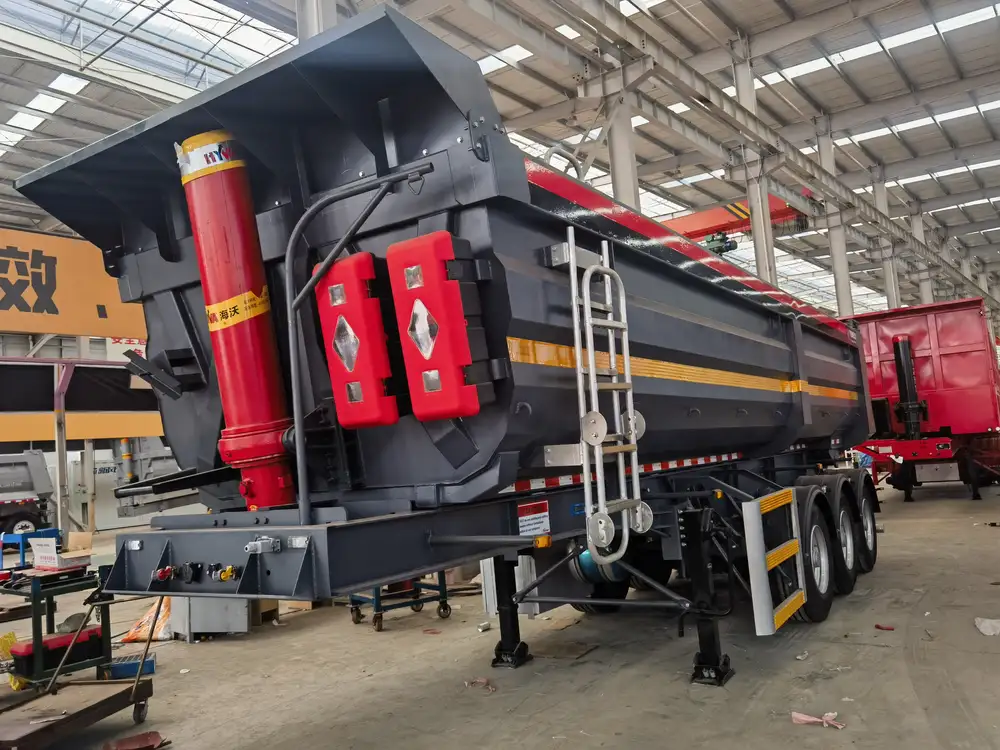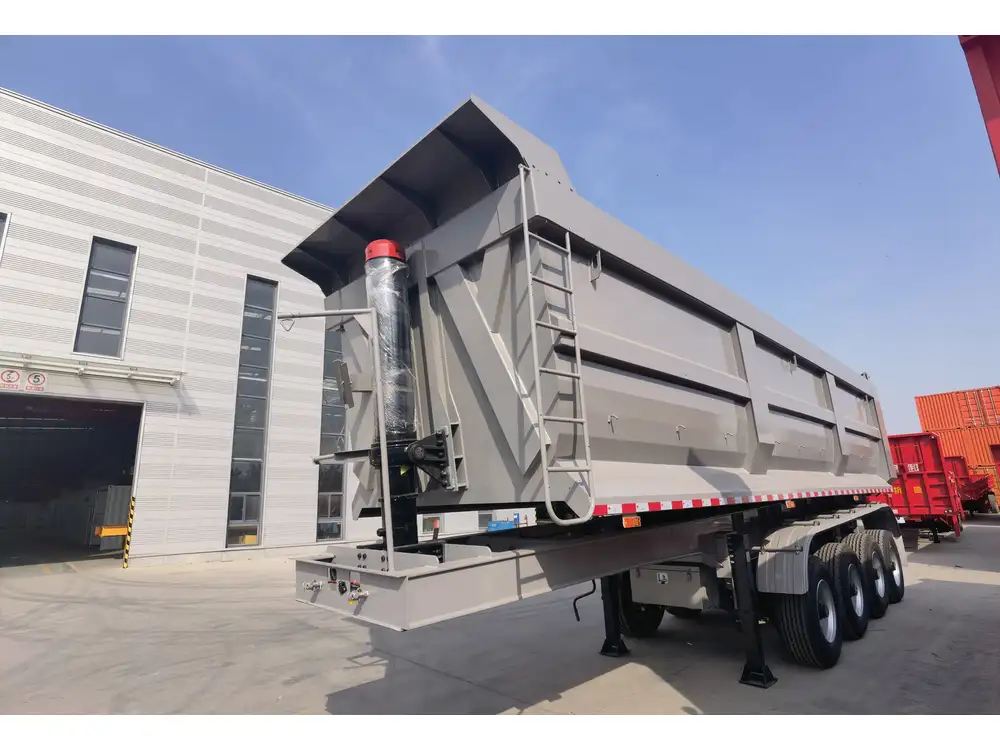When it comes to the transportation industry, understanding the dimensions of trailer containers is crucial for making informed decisions. These containers come in various sizes, designed to meet specific shipping needs, regulatory standards, and operational capacities. Below, we will dissect the specifics of trailer container lengths, delve into their applications, and explore the myriad of factors affecting their suitability for different transportation tasks.
Understanding Trailer Container Sizes
Trailer containers, primarily used in the freight transportation sector, are typically measured in two main dimensions: length and height. The most common lengths for standard shipping containers are:
| Container Type | External Length | Internal Length | Width | Height |
|---|---|---|---|---|
| Standard Container | 20 feet | 19.4 feet | 8 feet | 8.5 feet |
| Standard Container | 40 feet | 39.5 feet | 8 feet | 8.5 feet |
| High-Cube Container | 40 feet | 39.5 feet | 8 feet | 9.5 feet |
| High-Cube Container | 45 feet | 44.5 feet | 8 feet | 9.5 feet |
Common Lengths Explained
20-Foot Containers
- Usage: Ideal for small-scale shipments, including household goods and lighter freight.
- Capacity: Can hold approximately 10 standard pallets.
40-Foot Containers
- Usage: The most popular size for bulk shipments, suitable for a wide range of products.
- Capacity: Can accommodate around 20 standard pallets, making it a frequent choice for commercial transportation.
High-Cube Containers
- Available in both 40-foot and 45-foot versions, these containers offer additional height, allowing for more significant cargo capacity without expanding the footprint.
- Usage: Preferable for goods that require extra vertical space or additional loading volume.

The Importance of Container Length in Transportation
Understanding the length of trailer containers not only helps in effective space management during loading but also impacts various operational aspects:
- Regulatory Compliance: Different countries and regions have specific regulations regarding maximum container lengths on the roads. This compliance is essential for avoiding fines and ensuring safety.
- Logistics Planning: The container’s length influences how many units can be hauled per trip, directly affecting transportation costs and efficiency.
- Cargo Protection: Adequately sizing your container helps protect cargo from damage during transit, as improperly fit containers increase the chances of movement and impact.
Factors Affecting Container Length Selection
Selecting the appropriate trailer container involves several considerations:
1. Nature of Cargo
Different types of cargo have specific size requirements, which dictate the selection of container length:
- Bulk Commodities: Products such as grains and liquids often require specialized containers, influencing the length and width for optimal transport.
- Heavy Equipment: Machinery or oversized loads might necessitate the use of extended trailers or custom containers.

2. Transportation Regulations
Before choosing a trailer container, it’s critical to consider regional transportation regulations:
- Weight Limitations: Different jurisdictions impose strict limits on total weight, which can be directly influenced by the length of the trailer container.
- Road Length Restrictions: In certain regions, longer trailers are subject to limitations or require special permissions for transport.
3. Hauling Mechanism
The choice between different hauling vehicles also influences container selection:
- Tractors and Trailers: Certain tractor units are better suited to handle specific lengths based on their power and operational capacity.
- Intermodal Transport: Container length can dictate the choice of rail or truck-based transportation, affecting overall costs and transit time.
4. Cost Factor
Longer containers often come with a higher rental or purchase cost, and this factor must be weighed against the potential benefits of increased capacity.

Comparing Standard and High-Cube Containers
Dimension Table
| Container Type | External Dimensions (LxWxH) | Internal Dimensions (LxWxH) |
|---|---|---|
| Standard 20’ | 20′ x 8′ x 8.5′ | 19.4′ x 7.7′ x 7.9′ |
| Standard 40’ | 40′ x 8′ x 8.5′ | 39.5′ x 7.7′ x 7.9′ |
| High-Cube 40’ | 40′ x 8′ x 9.5′ | 39.5′ x 7.7′ x 8.6′ |
| High-Cube 45’ | 45′ x 8′ x 9.5′ | 44.5′ x 7.7′ x 8.6′ |
Key Differences
- Height: High-cube containers offer an extra foot of height, allowing for better stacking of goods—particularly beneficial for lighter and bulkier items.
- Weight: Standard containers might be preferred for heavier equipment due to their shorter height, which can stabilize loads better.

Advantages of High-Cube Containers
- Greater volume without changing the overall footprint.
- Ideal for goods requiring vertical space, such as furniture or machinery with significant height.
Practical Applications of Different Trailer Lengths
Understanding the practical applications of various trailer container lengths can aid businesses in selecting the right container for their unique transportation needs. Here are several common scenarios:
E-commerce Logistics
- Application: The rise of e-commerce has created a demand for flexible container solutions, especially for retailers needing to transport an array of different-sized products.
- Recommended Length: 40-foot high-cube containers for increased packing space.
Freight Shipping
- Application: Large-scale shipping of goods between manufacturers and retailers requires strategic container selection to maximize efficiency.
- Recommended Length: Standard 40-foot containers to balance volume and weight.
Construction and Heavy Equipment Transport
- Application: Moving construction machinery relies heavily on the size and weight of the equipment being transported.
- Recommended Length: Specialized flatbed trailers or 20-foot containers for compact machinery.
Conclusion: Navigating the Complex World of Trailer Containers
In conclusion, the specification “how long are trailer containers?” unfolds a complex consideration of dimensions, regulatory environments, and operational needs. By understanding the details outlined above, businesses can make informed decisions when selecting trailer containers that align with their transportation goals.
Whether you are involved in logistics, manufacturing, or retail, recognizing the nuances of trailer container lengths will empower you to optimize your freight handling processes, ensuring a smoother and more efficient operation.
Feel free to delve deeper into the specifics of usage, storage, and compliance as you consider how best to leverage trailer containers in your endeavors!



